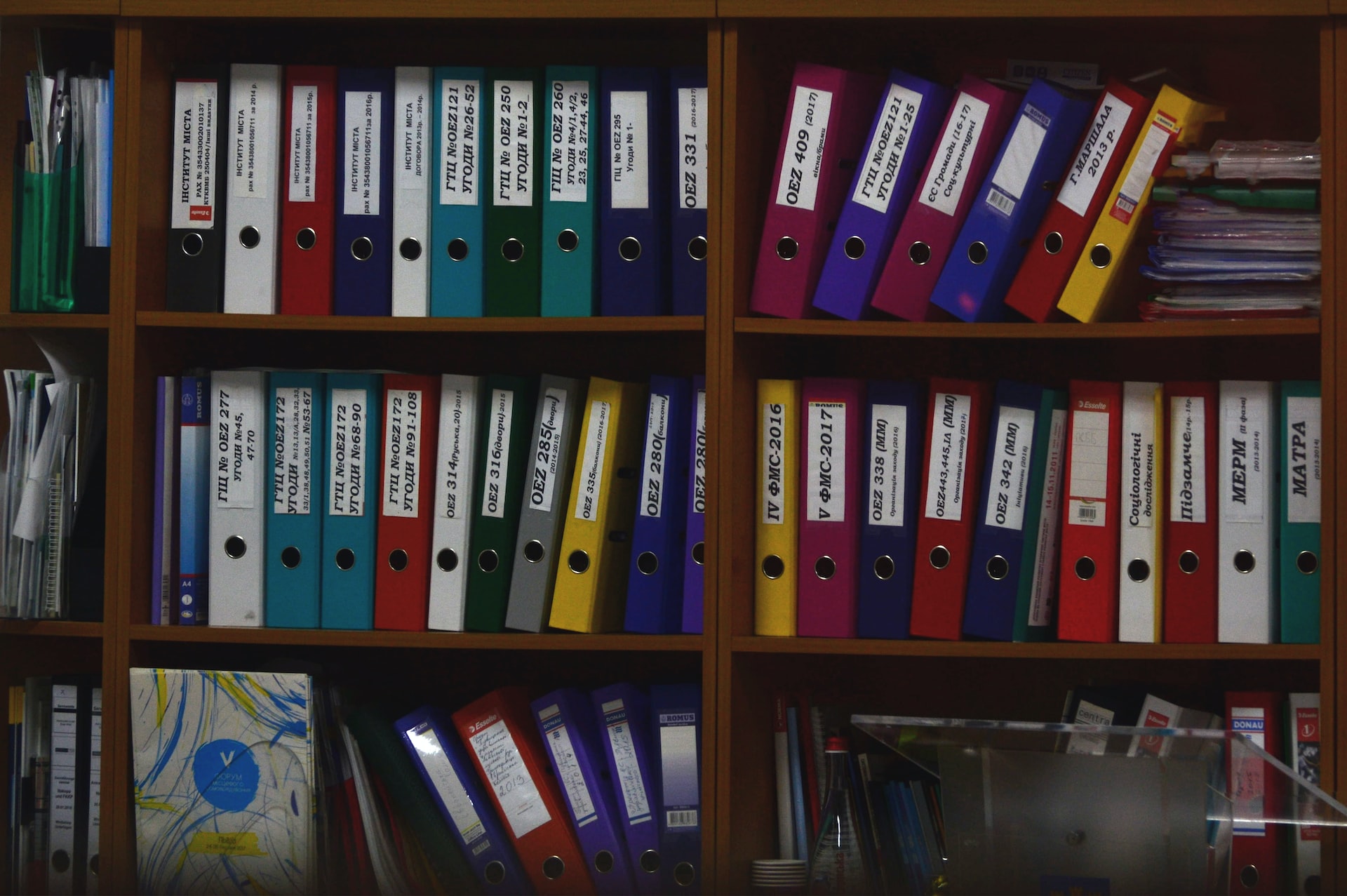HR Documentation: Do YOU Have Your Bases Covered?

Dealing with HR documentation might not be the most exciting part of your job, but it’s nonetheless a very important one. In this blog post we’re going to take a look at what documentation you need - and why.
HR documentation: why is it so important?
The documents you store in your Human Resources department detail the interaction between your organization and your employees. They cover all communications from the moment you interviewed, hired and onboarded them until the day they leave your employment.
And much of this information is sensitive, whether it relates to disciplinary action, salaries, and any one of the many diverse issues that can arise regarding your individual employees on a daily basis.
But not only do you need to be able to keep tabs on all this data so that you can ensure the smooth running of your HR department - and your business - but you also need to keep track of all interactions and information in the (hopefully, unlikely) event that an employee sues you for wrongful termination, discrimination or other factor.
In addition to this, keeping (and securely storing) company documentation also ensures that you are complying with any local, state and federal laws and regulations that pertain to your industry.
Therefore, utilizing one centralized and secure employee database where you can access data quickly and easily is essential.
Privacy and HR documentation
Confidentiality is crucial when it comes to keeping Human Resources documents. And as HR, you are responsible for maintaining that privacy. Your managers also need to know that they must also respect employees when it comes to accessing any information.
There are a couple of things to keep in mind regarding HR documentation:
- Data kept on employees must be kept confidential
- It should only be shared on a ‘need to know basis’ - i.e. with an employee’s manager/s
- However, create documentation with the idea in mind that it may need to be reviewed by a third party
- That means anything put in writing should take a fair, honest and consistent approach
But what documentation do you actually need to create and maintain? Let’s take a look at some of the major areas of good HR document keeping.
What documents do HR need to keep?
Let’s start from the very beginning of an employee’s lifespan with your organization.
Onboarding documentation
The aim of your onboarding process is to create a welcoming and engaging experience for new hires as soon as they accept your job offer. This increases the chances of them sticking around and becoming a valuable and productive employee from the very start.
But a truly great onboarding program involves paperwork. Lots of it. That’s why we recommend creating a new hire checklist so that you can be sure you have everything covered.
So what personal information do you need a new employee to provide? Typically it will be the following - and it includes some very sensitive information:
- Bank details
- Social security number
- Driver’s license
- Address and phone number
- Emergency contact details
- Medical information
You must ensure that you have the ability to handle employee onboarding efficiently and securely. Using an HRIS with a secure onboarding feature is your first step and will help protect you from the myriad of issues that can arise from the mishandling of this very private data.
Policy violation documentation
No doubt your workplace has various policies in place to ensure the efficiency, productivity and profitability of your organization. But what happens when employees flout or break those policies?
You need to document it.
This can include anything from poor performance to flagrant disregard of company standards and rules, such as:
- Poor attendance: habitual lateness, longer than mandated breaks, or unauthorized absence
- Aggressive or unpleasant behavior at work
- Ignoring rules regarding safe and respectful communication at work
- Unethical behavior with regards to clients or suppliers - such as taking kickbacks or bribes
- Breaking rules that have been established - no matter how ‘unimportant’ they seem - such as routinely disregarding your company’s policy about whether or not you can wear headphones at work or your dress code.
So what do you need to include in this HR documentation regarding broken policies and poor behavior?
First of all, you need to ensure that your policies are clearly laid out - otherwise how are your employees supposed to know what they’re doing wrong?
Sure, anyone with a modicum of sense will know that you shouldn’t arrive at work late and leave early, but other policies may not be so obvious. For example, do you have guidelines for online communications clearly stated in your employee handbook?
Make sure you have yourself covered by making sure everything from your lateness policy to your rules about calling out sick to booking paid time off are crystal clear and accessible to all.
You then need to document:
- The date of the conversation
- The dates on which infractions or rule breaking occurred
- The issue: the length of breaks, the lateness, the number of times they caused an issue etc
- How you specifically explained to the employee what they did wrong
- The employee’s reasons for the occurrence
- Your attempts to assist the employee with an underlying issue: for example, is there a valid reason why they are consistently late? Your goal here is to solve the problem.
- How you reiterated your expectations: “We expect you to take one hour for lunch and no longer. If you continue to disregard this, we may take disciplinary action, including a formal warning and possibly termination of contract.”
You should also ask the individual to sign the document so that you have written evidence that they acknowledge the conversation happened.
Training and development documentation
When an employee is performing well, their manager may have decided that they are ready to take on new responsibilities. This should be included in your HR documentation. Here’s what you should take note of:
- The employee’s current responsibilities
- The employee’s qualifications
- An explanation of why the manager feels the individual is ready to take on more responsibilities
- An updated (or new) job description which clearly states the new additions to the position or the new role
- What training needs to be undertaken so the employee can perform their new role successfully
- A plan for training including how long it should take and its expected start and end dates
- The expected skill level at the end of the training
Again, ask the employee to sign the documentation to state that they acknowledge and accept the new responsibilities and commit to undergoing training.
Documenting poor performance
If an employee is unengaged, demotivated and not performing to the best of their abilities, missing deadlines or not completing work satisfactorily, it’s time to have that tricky conversation to address it.
Here’s what to include in poor performance HR documentation:
- The date of the conversation
- An explanation of why you are having this conversation detailing the issues surrounding their output, work or performance - include specific examples
- Reiterate the company’s expectations
- Whether you have offered assistance or a plan to improve performance
- The details of any performance improvement plan, including its start and end dates
- The date by which a marked improvement must have been achieved
- What ‘improvement’ looks like - i.e. deadlines met, better quality/quantity of output
- How you reiterated your expectations for the above and how disciplinary action, including a formal warning and possibly termination of contract may be taken in the event of no improvement
As before, the employee should sign the document.
Sick leave HR documentation
How you handle and document this will depend upon the local laws in your area. These may be state or county, or even city laws regarding paid leave.
However, depending on the law, your location and the employee’s circumstances, not all of these laws require documentation. In addition, not all are restricted to sick leave. Some areas allow for paid time off and do not demand that the reason for leave is given.
Take a look at your existing policy concerning sick leave and ensure that it correlates with your local laws. You might not need to ask your employees to provide a doctor’s note in some areas - even though that’s the usual go-to when someone calls in sick.
Document this and also:
- The dates the employee was away from work
- How the time off was taken regarding the relevant law
- A doctor’s note - if your city, county or state doesn’t have a paid leave law
Medical leave HR documentation
Medical leave, rather than sick leave, can be requested by an employee under the federal Family Medical Leave Act (FMLA) which is applicable in all states in the US. Where you need to be slightly careful is if your location has any other requirements that run alongside FMLA.
This allows an employee to take leave due to reasons such as an illness, a close member of their immediate family falling sick, or pregnancy.
Things you will want to include in your medical leave documentation include:
- The dates of the medical leave and when the employee is expected to be able to return to work as noted by the employee’s health care provider
- The existence of a medical condition - although you should not state what the condition is and this will be submitted by the health care provider.
- If the medical leave is to be intermittent or continuous
You should also make it clear in your request for documentation that you are NOT requesting a diagnosis or prognosis.
HR documentation: covering your bases
If you’re a small to mid-sized organization and you don’t have a huge team of HR professionals working for you, it can feel overwhelming to keep up with all the necessary paperwork and documentation.
However, ensuring that you have all your bases covered is crucial for the efficient running of your business - and for peace of mind in the event that a disgruntled employee or even client or customer decides to hit you with legal action.
Take the time, therefore, to ensure you have all HR documentation in order, it's up-to-date and that you’re storing it in a secure manner.
Want to know how Hezum can help you take control of your HR department and documentation? Book a free no-strings-attached demo today and let’s get the ball rolling!

Eve Church
I'm a UK-based content writer here at Hezum. I've an interest in all things HR and company culture.
United Kingdom


